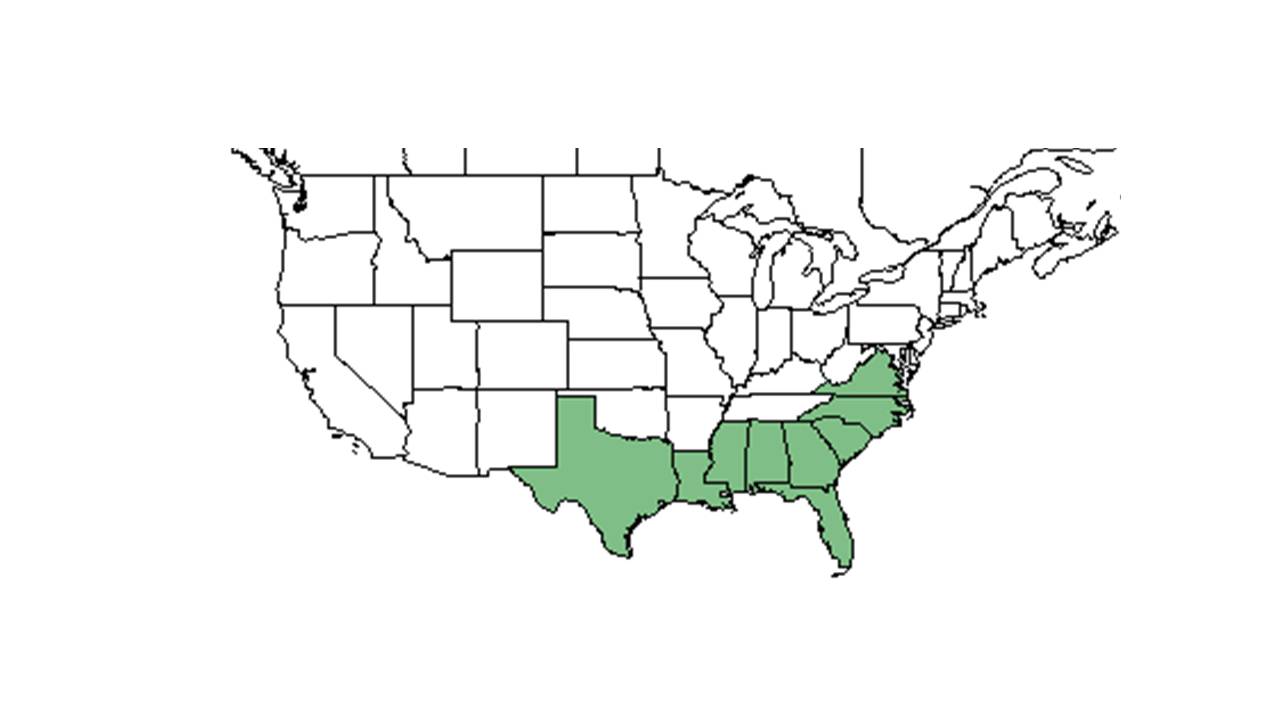Hypericum setosum
| Hypericum setosum | |
|---|---|

| |
| Photo taken by Gil Nelson | |
| Scientific classification | |
| Kingdom: | Plantae |
| Division: | Magnoliophyta - Flowering plants |
| Class: | Magnoliopsida – Dicotyledons |
| Order: | Theales |
| Family: | Clusiaceae ⁄ Guttiferae |
| Genus: | Hypericum |
| Species: | H. setosum |
| Binomial name | |
| Hypericum setosum L. | |

| |
| Natural range of Hypericum setosum from USDA NRCS Plants Database. | |
Common name: hairy St. John's-wort
Contents
Taxonomic notes
Synonyms: none.[1]
Varieties: none[1]
Description
Hypericum setosum is a perennial herbaceous species.
“Usually glabrous herbs or shrubs. Leaves usually punctate, simple, opposite, entire, usually sessile or subsessile, exstipulate. Inflorescence basically cymose; flowers perfect, regular, bracteates, subsessile or short-pedicellate, sepals 2, 4, or 5, persistent; petals 4 or 5, usually marcescent, yellow or pink; stamens 5-numerous, separate or connate basally forming 3-5 clusters or fascicles, filaments usually persistent; carpels 2-5, stigmas and styles separate or fused, ovary superior, 1-locular or partly or wholly 2-5 locular, placentation axile or parietal. Capsules basically ovoid, longitudinally dehiscent, styles usually persistent; seeds numerous, lustrous, areolate, cylindric, or oblong. In general, our species form a polymorphic complex with many intergrading taxa.”[2]
"Erect, pubescent annual or biennial, 2-7.5 dm tall, sparingly branched. Leaves ascending, elliptic-lanceolate, or ovate, 1-nerved, 3-15 mm long, 2—8 mm wide, acute, base clasping, sessile. Flowers alternate or terminal, ascending branches. Sepals 5, ciliate, 3-4.5 mm long; petals 5, 4-7 mm long; stamens numerous, in clusters; stigmas capitates, styles 3 or4, separate, 1.5-2.5 mm long, ovary 1-locular. Capsules ovoid, 4-5 mm long, 2.5-3.5 mm broad seeds yellow, 0.5 mm long."[2]
Distribution
Hypericum setosum is endemic to the longleaf pine forest range[3] from southeastern Virginia south to central peninsular Florida, and west to southeastern Texas.[1]
Ecology
Habitat
Generally, H. setosum can be found in wet pine flatwoods, pine savannas, adjacent ditches, boggy areas, scrapes, and fire plow lines.[1] It mainly occurs in moist or dry loamy sand and seems to prefer light, open conditions. It can be found in pinewoods, bordering swampy depressions, and in open wiregrass flats in longleaf pinelands. On the other hand, this species also appears in disturbed areas, including ditches and power line corridors.[4] In the southeastern gulf coastal plain, this species is listed by the USDA Natural Resources Conservation Service as a facultative wetland species that most often occurs in wetland habitats, but can occasionally be found in non-wetland habitats.[5] Additionally, it is considered an indicator species of the upper panhandle savannas in Florida.[6]
Associated species include Pinus palutris and Aristida stricta.[4]
Phenology
H. setosum generally flowers from May until September.[1] It has been observed flowering in July, August, and September, while fruiting has been observed in September and October.[4][7]
Seed bank and germination
Several short-lived perennial forbs also have a seed bank persistent for at least several years.[8]
Fire ecology
This species is found in habitats that are maintained by fire.[4]
Conservation, cultivation, and restoration
This species is considered to be critically imperiled in Virginia.[9]
Cultural use
Photo Gallery
References and notes
- ↑ 1.0 1.1 1.2 1.3 1.4 Weakley, A.S. 2020. Flora of the Southeastern United States. Edition of 20 October 2020. University of North Carolina at Chapel Hill, Chapel Hill, North Carolina.
- ↑ 2.0 2.1 Radford, Albert E., Harry E. Ahles, and C. Ritchie Bell. Manual of the Vascular Flora of the Carolinas. 1964, 1968. The University of North Carolina Press. 709-715. Print.
- ↑ Sorrie, B. A. and A. S. Weakley 2001. Coastal Plain valcular plant endemics: Phytogeographic patterns. Castanea 66: 50-82.
- ↑ 4.0 4.1 4.2 4.3 Florida State University Robert K. Godfrey Herbarium database. URL: http://herbarium.bio.fsu.edu. Last accessed: June 2014. Collectors: Loran C. Anderson, Wilson Baker, R. A. Norris, and M. Davis. States and Counties: Florida: Gadsden, Liberty, and Wakulla. Georgia: Grady and Thomas.
- ↑ USDA, NRCS. (2016). The PLANTS Database (http://plants.usda.gov, 28 May 2019). National Plant Data Team, Greensboro, NC 27401-4901 USA.
- ↑ Carr, S. C., et al. (2010). "A Vegetation Classification of Fire-Dependent Pinelands of Florida." Castanea 75(2): 153-189.
- ↑ Nelson, G. PanFlora: Plant data for the eastern United States with emphasis on the Southeastern Coastal Plains, Florida, and the Florida Panhandle. www.gilnelson.com/PanFlora/ Accessed: 12 DEC 2016
- ↑ Platt, W. J., S. M. Carr, et al. (2006). "Pine savanna overstorey influences on ground-cover biodiversity." Applied Vegetation Science 9: 37-50.
- ↑ [[1]] NatureServe Explorer. Accessed: May 28, 2019